15 Fascinating Facts about Snow
 Let it snow, let it snow, let it snow! Snow is one of the most loved and
hated things about winter. It’s difficult to find anyone who is totally
ambivalent about it. When the topic of snow comes up someone will either tell
you with a sneer how difficult their drive to work was or they will excitedly
tell you how pretty the first fall looked from outside their window. You either
love it or you hate it. In the United States, most people see snow at least once
or twice a year. Some people see more snow than they see warm weather. Snow
isn’t just something that you make forts, men, angels, and weapons out of. Let it snow, let it snow, let it snow! Snow is one of the most loved and
hated things about winter. It’s difficult to find anyone who is totally
ambivalent about it. When the topic of snow comes up someone will either tell
you with a sneer how difficult their drive to work was or they will excitedly
tell you how pretty the first fall looked from outside their window. You either
love it or you hate it. In the United States, most people see snow at least once
or twice a year. Some people see more snow than they see warm weather. Snow
isn’t just something that you make forts, men, angels, and weapons out of.
Not only has snow played a role in many myths for centuries, there is a lot
of science around the not so simple snowflake. How snowflakes are formed and why
it seems that no two are alike are of interest to many people in the scientific
community. People have studied it to try to replicate it with little true
success. As any skier can tell you, man made snow simply isn’t the same as the
stuff that falls from the sky. This hasn’t stopped people from trying. Below are
fifteen interesting facts about snow that we’ve collected.
15) There are
Different Types of Snow
Snow is a type of precipitation, just like rain. It happens when water droplets
collide in clouds and then get heavy enough to fall out of the sky. But snow can
be more than just snowflakes, depending on the exact conditions in the cloud
where it started forming.
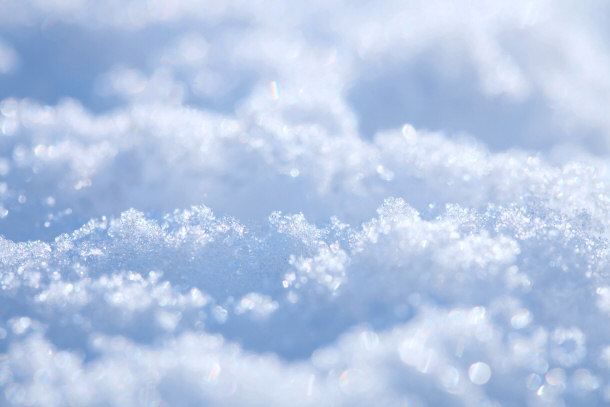
Snowflakes are the most common type of snow and they're what people usually
think of. Ice crystals freeze together and turn into beautiful snowflakes that
fall from the cloud once they get big enough. Sleet is formed when the
temperature in the cloud isn't cold enough to form ice crystals, but the air
temperature on the way down makes the water droplet partially freeze. That's why
sleet seems to be a mixture of rain and snow.
Sometimes clouds can have supercooled droplets in them. That means the
temperature is below freezing, but the water is still liquid. When ice crystals
fall through clouds like that, the supercooled drops stick to the ice crystals
and freeze together. That's when you get the type of snow that looks like little
crumbly balls when it falls. The official word for this kind of snow is graupel.
14) Hail is Not Snow
Hail is frozen and it falls from the sky, so why shouldn't it be called a type
of snow? Well, the truth is that hail is formed in a different way from the rest
of the types listed above. For one, hail is usually found in thunderstorms,
which you don't see on a typical winter's day. That means that it usually
happens in spring or summer, and often comes at the same time as rain.
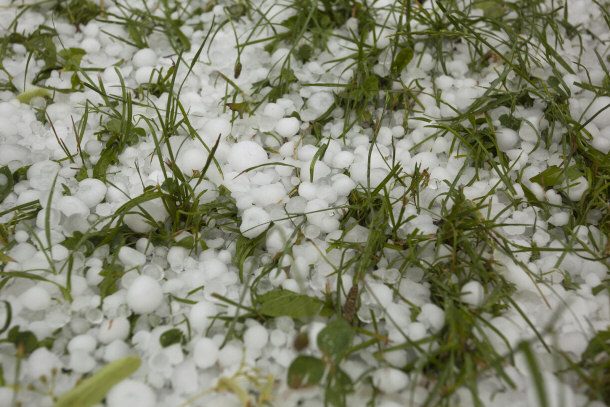
The higher up into the atmosphere you get, the colder it becomes. So even in
summer, there are some clouds high up in the atmosphere where graupel forms.
During a thunderstorm, there are strong upward winds in the cloud layer called
updrafts. The graupel might start to fall, but it gets pushed back up by the
updraft instead. When that happens, it goes back into the cold clouds where it
originally formed and more ice sticks to it. The hail gets bigger and bigger
until it's finally too big for the updraft to carry anymore, and it falls to the
ground. The stronger the updraft, the longer the hail can stay up in the
freezing layers before it finally falls. That's why more intense storms often
lead to bigger hail.
13) Snowflakes
Aren't Always Six Sided
Actually, most snowflakes aren't six sided! While ice naturally grows into the
types of shapes we're familiar with, most snowflakes don't get a chance to form
perfectly while they're floating around in a cloud. Irregularly shaped
snowflakes are by far the most common type. That means they got interrupted
while the crystals were forming, or one snowflake bumped into another while they
were still freezing and they stuck together, or any number of other things
happened that meant the snowflake came out lopsided. That said, even snowflakes
that get to form into the beautiful shapes you love looking at can come in a
huge variety of forms.
Ice is a type of crystal, meaning that it forms into geometrically regular
shapes. In the case of small and perfectly formed ice crystals, namely
snowflakes, that means they usually form a shape with six symmetrical points.
Within that, though, there are a whole bunch of different ways they can form.
Some snowflakes form into a simple solid hexagon, while others have long spindly
points. And sometimes snowflakes grow on columns, with one normal snowflake on
each end and a little stick of ice in between.

Usually all of those forms are six sided. Even the column type will have a
six-pointed snowflake on each end. But sometimes other things can happen.
Because ice works the way it does, you won't see any four or five or fifteen
pointed snowflakes, but on rare occasion, you might see some that have three or
twelve sides. When the temperature is within a couple degrees of freezing,
triangular snowflakes can form. Twelve sided snowflakes happen when two crystals
form together so the points from one fit perfectly into the spaces between the
points on the other. That way, two six pointed snowflakes can join into a
perfect twelve pointed snowflake.
There are also ice crystals that, instead of forming into the typical
plate-like snowflake form, end up growing into rod shapes. These look a lot more
like quartz crystals or something else you might find in a gem shop than they do
like a snowflake.
12) There Really Are
No Two Snowflakes That Are Exactly Alike
At least, probability-wise. It's possible there may have been a couple pairs of
snowflakes that were exactly identical to one another, but unless we somehow
find a way to individually look at and catalog each snowflake that ever falls on
the planet, there's no way we'll ever be able to say for sure. What we can say
is that it's extremely unlikely that any two complex snowflakes will actually
look the same. That's because there are so many subtle variations in the way ice
crystals can go together than the number of possible combinations is
staggeringly huge. Enough so that even if you take into account every snowflake
that's fallen since the first time snow fell on Earth, it probably still isn't
enough to cover every single possibility, much less to make it probable that the
same thing would have happened twice. Snowflakes come in a variety of definable
types, so there are plenty that look similar.
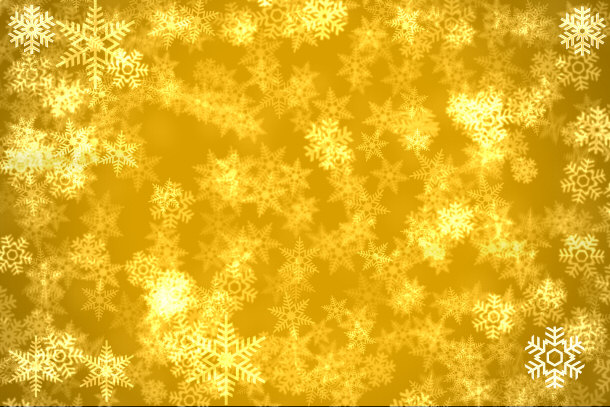
Small snowflakes can be the same as each other, though. Most snowflakes start
out as a simple hexagon and then grow from there. Sometimes they don't get any
bigger than that, so they don't have a chance to grow unique features. Plenty of
these fall from the sky and they can also be created predictably in a lab
situation. So in that case, yes, small, simple snowflakes can be duplicates.
11) Snowflakes Can
be Gigantic
According to the Guinness Book of World Records, the largest snowflake ever
found was discovered in 1887 at Fort Keogh in Montana. It was 15 inches wide,
and described as “bigger than a milk pan”. That's hard to imagine when most
snowflakes measure in at less than a quarter of an inch, but it's hardly the
only example of a giant snowflake. There are plenty of reports of people
witnessing falling snow that was two to six inches in diameter. More recently,
scientists have discovered multiple instances of very large snowflakes by using
laser probes that can precisely measure the size of snowflakes while they're
still in the atmosphere. NASA is launching satellites to help track patterns of
precipitation, which should lead to even more discoveries of giant snowflakes.
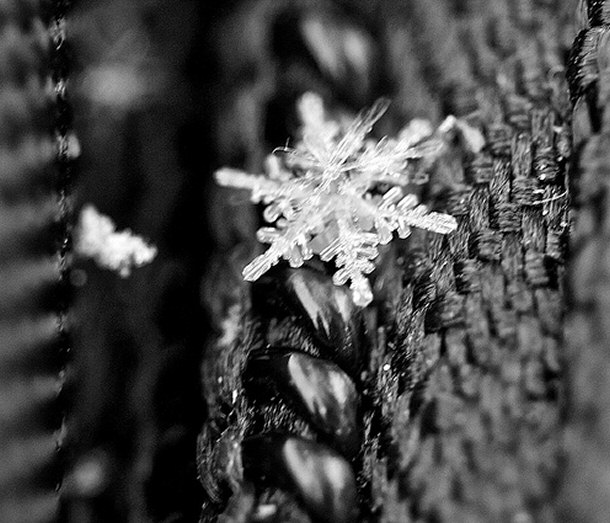
Giant snowflakes are often formed when individual crystals collide and freeze
together. They often end up bowl shaped, with the edges upturned as they fall.
They don't spin around as much as smaller snowflakes and they fall faster. As
far as single snowflakes go, there are reports of single ice crystals that are
at least the size of a dime.
10) Fake Snow is Not
Like Real Snow
Artificial snow is commonly used in places that offer opportunities for skiing
and snowboarding. When your business requires snow to be on the ground year
round, you can't rely on the sky to always provide it for you, so people have
learned how to make their own. That is, people have come up with a pretty good
approximation of snow, but it isn't exactly the same.
A snow machine is designed to mimic the process of how snow would normally
form in a cloud. The machine blows out a mixture of fine water droplets and
compressed air. The air gets colder as it decompresses, and the drop in
temperature causes the water droplets to freeze. Then it falls down onto the ski
slope as snow.
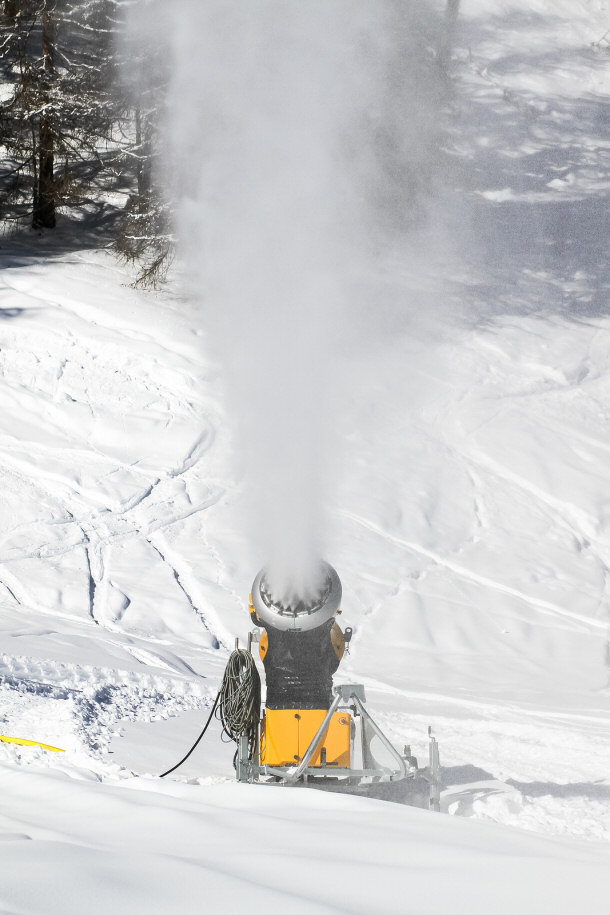
This sounds the same as what goes on in a cloud, and it's pretty similar. But
the water in a cloud starts out as water vapor, and often when particles come
together to form snow, they are already frozen. When the water comes from a snow
machine, it's already in larger droplets than it would be in a cloud, so when it
freezes, it just stays in the shape of droplets. If you look closely at the snow
that comes from a snow machine, you'll see that it looks like a bunch of tiny
water droplets stuck together, rather than anything resembling a snowflake.
9) Snowflakes Have
Emotions
This one isn't so much a fact as an interesting theory proposed by Masaru Emoto,
snowflake photographer. Several years ago, he challenged himself to create
snowflakes in a lab and capture the results on film. After a while, he decided
to try some pretty odd experiments. For example, he would take water from the
same source and expose one part to angry heavy metal music and the other to
soothing classical music. Or he would divide the water and tell one vial it was
good water and that he loved it and the other that it was the bad water and he
hated it. Then he would see what kind of crystals formed from each.
What he found was that the water responded to the emotional energy of
whatever it was presented with, and that affected its crystalline structure.
When he froze the samples, he saw that water that had been given positive
influences formed into beautiful, perfect or near perfect snowflake shapes. The
water that had been exposed to negative music formed irregular and deformed
shapes instead. The running theory behind his research is that water listens,
and it has feelings, too!

He published his results in his own books as opposed to scientific journals
or the like, so there is of course some debate over how scientific these studies
are and some question about the validity of the results. There are plenty of
people who think his results are completely invalid and he just picked out the
photographs that best supported the conclusion he wanted to see. Obviously, it's
a little hard to say unless you've seen him work first-hand, which most people
haven't. But even so, his books are pretty widely popular and if nothing else,
it's a cool idea.
8) Why is Snow
White?
Water is transparent, which means we can see through it pretty easily. So why is
it that ice is white? When water freezes into ice, it turns into a different
form. It's solid instead of liquid, and instead of being transparent, it becomes
translucent. That means that light still passes through it, but it gets
distorted. When light hits a thin layer of water, it passes right through, and
you can see it almost as if there wasn't any water in the way. But when light
hits ice, some of it reflects back, some of it passes through, and some of it
bends to a different angle. When you look at a single snowflake, it looks clear
and colorless, but when you look at a pile of snowflakes, you get a different
result.
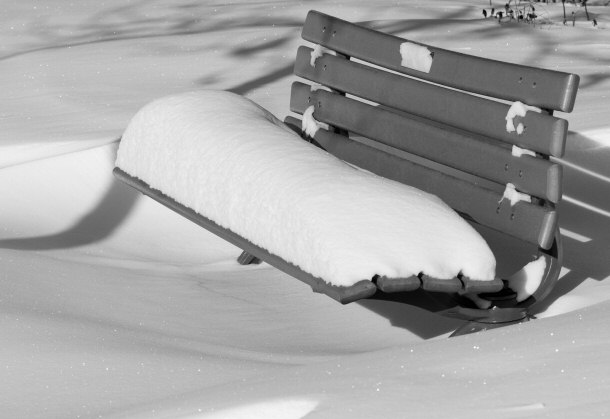
Light hits one ice crystal, which bends it so it goes through a different ice
crystal, which makes it go through another ice crystal, and so on. Eventually
all the rays of light come back out, but they're probably pretty scattered from
how they went in. The wavelength of light determines the color that we see. If
something is shining or reflecting blue light, then it looks blue. But because
ice takes all the colors and shines them back all scattered together, what we
see is all the colors at the same time, which shows up as white.
7) It’s Never “Too
Cold to Snow”
Depending on the temperature, snow can be rarer, but it's never impossible. And
even then, it isn't exactly the temperature that causes the change. In order for
snow to fall, it has to be below freezing, so there definitely is such a thing
as the weather being too warm for snow. But once it's cold enough to freeze,
there's nothing else the temperature can do, right? Well, kind of. It is true
that snow gets much less frequent once it gets below -40°F/-40°C, but why is
that? How can it be too cold to snow?

The answer is it isn't. Snow can still fall at that temperature, assuming
there's enough moisture in the air for snow to form. But at that low a
temperature, there is very little moisture in the air, so there is nothing there
to turn into snow. So it's not technically too cold to snow, but it is too cold
for much snow to form in the first place.
6) You Actually Can
Tell How Cold it is by the Crunch of the Snow
At least, you can tell whether or not it's below a certain temperature. Snow is
fundamentally ice, and since pressure can have the same effect as a rise in
temperature, it can turn back into water when you step on it. That's actually
the principle that makes things like skiing and ice skating work. When you push
down on ice or snow with a ski or a skate or a snowboard, you create a thin
layer of water, and since water can flow, that means you can easily move
forward.
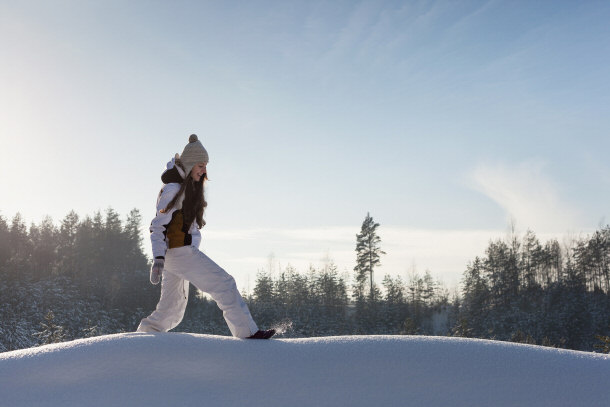
The differences in the sound of snow work the same way. If the temperature is
above 14F/-10°C, the pressure of your shoe pushing down on the snow will cause
some of it to melt, and it will flow out of the way without making any noise. If
it's colder than that, though, the pressure won't be enough to make the snow
melt. Instead of flowing and reshaping to accommodate your foot, the snow
crystals will be crunched against each other. When that happens, they make an
audible squeaking sound.
5) Halos Around the
Sun or Moon Mean Snow is Coming
You've probably heard someone say that snow must be coming when they notice a
halo around the sun or the moon. There is good scientific backup for that
assumption. The halos of light that sometimes appear around the sun or moon
occur when the light reflects through ice crystals in the atmosphere, similar to
how a rainbow is formed. Depending on the shape of the ice crystals, the halo
can form as just a circle around the sun or the moon, or it can create patterns
of many arcs across the sky. In the South Pole, the air is so dry that snow
crystals form slowly and tend to be more perfectly shaped than those found in
many other places, so the halos witnessed from the South Pole are exceptionally
beautiful and intricate. Regardless of the shape, when you see a halo like that,
it's a sure sign that ice crystals are there in the sky.
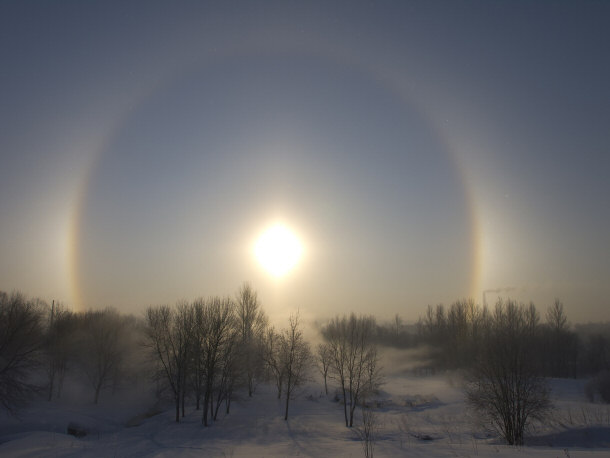
Of course, these halos can appear whenever ice crystals are present in the
atmosphere, even when that's just the ones that are still up in the clouds.
Whether or not snow will actually fall is anyone's guess.
4) Snow Can be a
Mirror
When you look at snow, a mirror probably isn't your first thought. After all, it
generally looks white, not reflective, and you certainly can't see your face
looking back at you when you look down at snow on the ground. But snow is
reflective—it's just not clear like a mirror because it's made up of so many
tiny pieces.
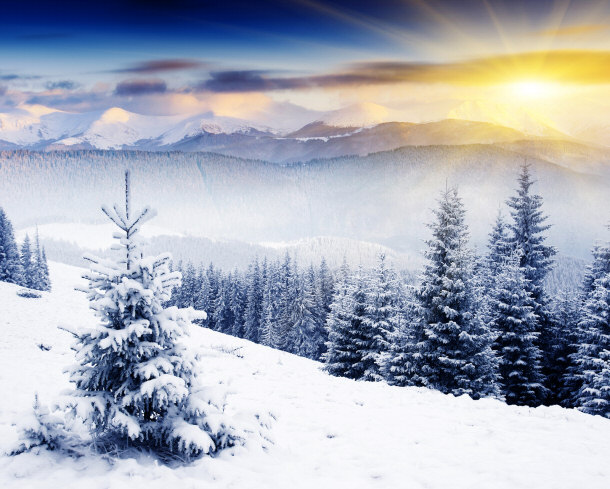
In fact, snow is partly responsible for keeping this planet at a reasonable
temperature overall. Large snow-covered areas act like huge mirrors that reflect
sunlight. Instead of absorbing radiation from the sun like earth does, it sends
the radiation right back out into space. The sun's radiation is what keeps this
planet warm enough to live on, but if ice didn't exist to reflect back the
extra, it would probably be too hot. Because of this, snow is a major factor in
discussions about global warming.
3) Snow and Ice Can
Keep You Warm
This is a secret that both people and animals native to cold and snowy
environments know. Ice is cold, so it doesn't immediately make sense that it can
keep you warm. But it works on the same principle as a blanket. A blanket isn't
warm by nature, but it's a good insulator—if you put a blanket over you, it will
trap in your body heat. Ice does the same. If you're in a structure made out of
ice, the air trapped in side will warm up because your body gives off heat. If
the walls are thick enough, they won't melt from the increased temperature, and
you'll be able to stay warm. You can get this effect in a natural ice cave or in
a space that you built yourself out of ice and snow. This is why the Inuits
build igloos.
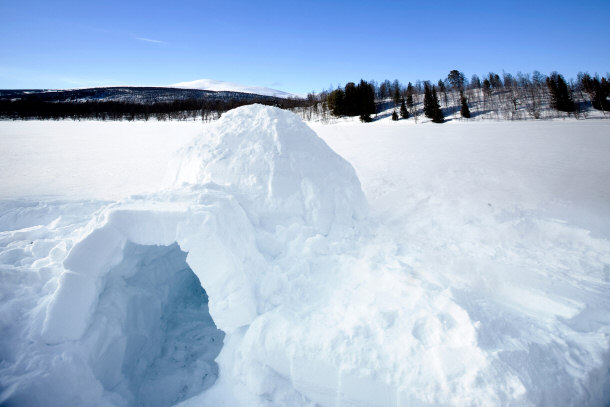
2) How to Keep
Snowflakes
It's not possible to actually keep snowflakes, but you can keep a permanent
record of the snowflakes you've found. All you need is a piece of glass
(preferably a microscope slide so you can look at your preserved flakes close up
later), a box, and either some hairspray or a substance called Crystal Clear. If
you're using hair spray, make sure it's an aerosol can, not a pump. Obviously,
you'll also need some falling snow to catch, too.
Before it snows, make sure the rest of your materials are cold. Keep them in
your freezer or leave them outside overnight. Once you're ready to catch the
snow, grab your chilled supplies and spray one side of the glass with the
hairspray or Crystal Clear. Hold out the glass and let just a few snowflakes
fall on the coated side.
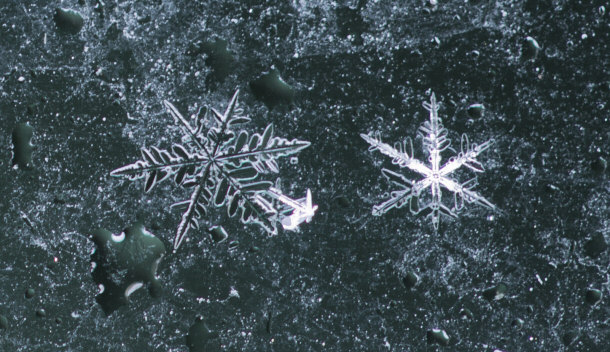
Once you have the flakes, put the glass into the box so no more snow falls on
it, and give the hairspray or Crystal Clear a while to dry. Then you can bring
the slide inside, where it can all thaw to room temperature. The snowflakes
themselves will melt, but you'll have a permanent record of the snowflakes you
caught. If you used hairspray, there will be a visible outline where the flakes
were. If you used Crystal Clear, the plastic substance will actually creep up
and dry around the snowflakes, leaving you with a solid three dimensional
replica.
1) Snow Records
In addition to the huge snowflake mentioned earlier, the Guinness Book of World
Records lists plenty of other achievements involving snow. Here are a few of the
more interesting ones:
- The largest snowball was made on the campus of the University of
Massachusetts, and measured a little over 23 feet across.
- The tallest snowman was 122 feet tall. It took the residents of Bethel,
Maine a full month to make.
- On February 17th, 2007, an event organized by the State Historical
Society of North Dakota claimed the record for the most people making snow
angels at one time.

Conclusion
Snow is many things to many people. If you're someone with a commute, it might
be that annoying thing that just makes it difficult to get to work. If you're a
scientist, you might spend your whole life studying it. For anyone who doesn't
live around the equator, snow is a part of life, and there are plenty of things
about it that are downright fascinating, and sometimes truly beautiful. As
scientists keep examining the phenomenon of snow, we gain more knowledge and
insight. But no matter how much we know and how scientific it all is, there will
probably never be a day when the sight of falling snow can't be seen as somehow
magical.
Nature
Top Lists:
15 Fascinating Facts about the Amazon Rainforest
15 Remarkable Facts About Bacteria
15 Remarkable Facts About Jellyfish
15 Little Known Facts About Elephants
15 Fascinating Facts about Earthquakes
15 Odd And Interesting Facts about Monkeys
Top 15 Myths about Snakes
Top 15 Myths about Horses
Top 15 Creepy Deep Sea Creatures
15 Unexpected Animals That Can Kill You Quickly
Top 15 Spider Myths
15 Beautiful Animals that are Now Extinct
Top 15 Most Amazing Snakes Around the World
15 Fascinating Facts about Snow
Top 15 of the World's Rarest Flowers
10 Most Emotional Animals
15 of the Most Venomous Creatures to Roam the Earth
15 Unusual Animal Defense Mechanisms
15 Unusual and Less Known Uses of Rocks
15 Unique Forest Creatures Less Known To Man
15 Interesting Facts About Time
15 Unknown Parasites You Never Knew Existed
15 Weird Trees Around The World
15 Wild Animals Deadly to Humans
15 Exotic Insects That Are Harmful & Deadly
15 Ridiculous Uses for Gold
Informational:
Preparing for a Disaster
Proof That We Are What We Are!
What is the Meaning of Life?
The Trend and Challenges Facing the Urban World
Creation Narratives and the Evolution Creationist Debate |